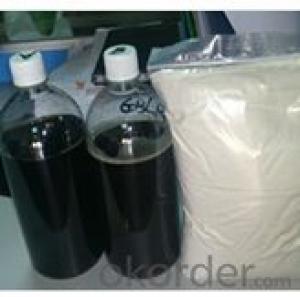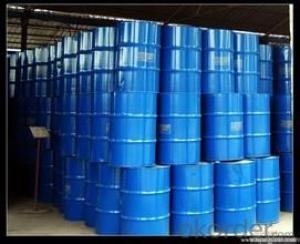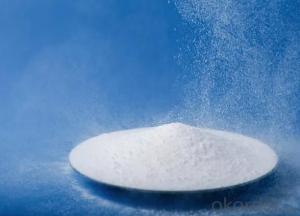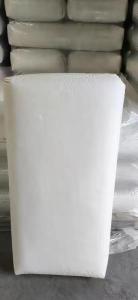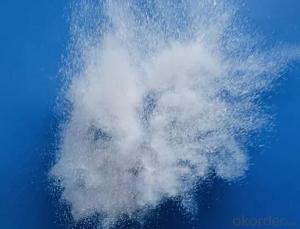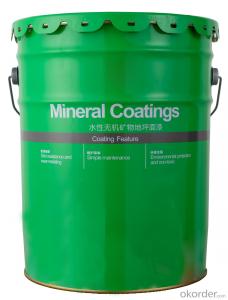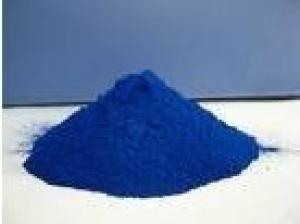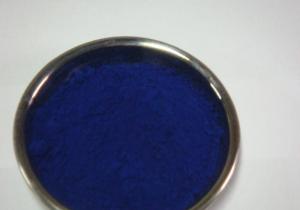Textile auxiliary, Textile chemical biopolishing Acid Cellulase Enzyme
- Loading Port:
- Shanghai
- Payment Terms:
- TT OR LC
- Min Order Qty:
- 1 bottle
- Supply Capability:
- 10000 bottle/month
OKorder Service Pledge
OKorder Financial Service
You Might Also Like
Quick Details
| Classification: | Chemical Auxiliary Agent | CAS No.: | Chemical Auxiliary Agent | Other Names: | acidic enzyme water |
| Place of Origin: | Guangdong China (Mainland) | Type: | Chemical Auxiliary Agent | Usage: | Textile Auxiliary Agents |
| Brand Name: | DEROU | Model Number: | GGL acidic Enzyme | Appearance: | Amber liquid |
| PH Value: | 4.0-5.0 | GGL dosage: | 0.3-1.5% (O.W.F) |
Packaging & Delivery
| Packaging Detail: | 25kg or 200kg per plastic drum. |
| Delivery Detail: | 3-7 days |
Specifications
acid cellulase for biopolishing
concentrated cellulase for textile bio-polishing
high quality and perfect service
Fast remove cowboy hair Natural Cellulase Enzyme GGL
1.Fabric bio-polishing finishing acidic enzymes water
2.For cotton, cotton / polyester blended fabric bio-polishing finishing
[Description]:
GGL is a new generation of non pathogenic bacteria deep fermentation of a high quality, highly concentrated cellulase suitable for complex products with different biological polished style for cotton, cotton/polyester blended fabric bio-polishing finishing, but also for washing factory and dyeing factory direct.
GGL belongs to the genetic modification of acid cellulase, available in PH-5.5-7.0 conditions, anti-back of its outstanding advantages of excellent dyeability, and therefore particularly suitable for denim washing. Its anti-the back stick performance is the best in the similar acidic cellulase.
[Specification]:
Appearance: Amber liquid
PH Value: 4.0-5.0
Vitality:≥13000 CMCU/mL
Compatibility: This product to the buffering agent, non-ionic surface active agent has a good compatibility.
[Direction for Usage]:
GGL dosage: 0.3-1.5% (O.W.F)
Bath ratio: 1:8-1:20
Processing time: 30-60minutes
Temperature: 45-55°C
PH Value: 4.5-5.5
[Properties]:
→ GGL suitable for cellulose fabric biopolishing finishing, the fabric surface clean, clean lines, greatly reducing pilling rates, effectively improve the fabric handle.
→ GGL according to the requirements of customers can produce different stone apparent effect, giving unique fermented wash denim fabric style.
→ Less strength loss, and good color, back contamination and cross color can be small, minimal lower shade changes.
[Inactivated]:
Treatment effect is reached must be inactivated. Can through the addition of anhydrous sodium carbonate will increase PH value of 10, or up to 70°C, with 10 minutes.
[Storage & Package]:
Can be stored for 6 months at 0-25°C in a sealed container, keep dry and avoid exposure to sunshine.
25kg or 200kg per plastic drum.
- Q:thank you very much for your help!
- photosynthetic pigment or antenna pigment is a pigment that is present in chloroplasts or photosynthetic bacteria and captures the light energy necessary for photosynthesis. Green plants have five closely-related photosynthetic pigments (in order of increasing polarity): Carotene - an orange pigment Xanthophyll - a yellow pigment Chlorophyll a - a blue-green pigment Chlorophyll b - a yellow-green pigment Phaeophytin a[1] - a gray-brown pigment Phaeophytin b[1] - a yellow-brown pigment Chlorophyll a is the most common of the six, present in every plant that performs photosynthesis. The reason that there are so many pigments is that each absorbs light more efficiently in a different part of the spectrum. Chlorophyll a absorbs well at a wavelength of about 400-450 nm and at 650-700 nm; chlorophyll b at 450-500 nm and at 600-650 nm. Xanthophyll absorbs well at 400-530 nm. However, none of the pigments absorbs well in the green-yellow region, which is responsible for the abundant green we see in nature.
- Q:What is pigment?
- Those are M.A.C. Pigments which are mineral powders that are very rich in color and shine. They can be used a myriad of ways and with so many different mediums. They can be used instead of eyeshadow or with it. It can go over creme based shadows. I have added M.A.C. pigments to body creme's, lip glosses, hair gels, nail polish (both clear and color). I've used them as highlighters for face and body. You can use them for virtually just about anything. They are one color when dry but tend to intensify when wet. It's a very versatile product. Lots of fun and tends to become a collectors item to many. For more on M.A.C. Pigments go to specktra / and register. It's basically a pro-M.A.C. site where you can even purchase samples of pigments. Hope you found this helpful, LR
- Q:I am 33 years old and have pigment dispersion syndrome. My new doctor prescribed laser treatment, to prevent eye damage and potential sight loss. A previous doctor said to try drops, but only if my eye pressure became high-risk. Has anyone in Yahoo's network been in my situation and if so, what did you do?
- Laser treatment for pigment dispersion is a fairly... I don't know what the word is. Modern? Progressive? It's something that isn't necessarily new, but it's definitely becoming more popular as an option, because it works fairly well without much risks. (Unlike medical treatment, where the drugs have much more common side effects.) Many people -- myself included -- have pigment dispersion syndrome, but not pigmentary glaucoma. The trick for us doctor types is to figure out which people are going to start having glaucoma and which ones won't. There's more to it than just pressure -- the amount of pigment, as well as the appearance/health of the optic nerve, any visual field damage, etc. There's also been some research suggesting that people with a particular shape of iris do better with laser treatment. If you're worried about it, make sure you're doing a visual field test regularly (I do mine yearly) and have your pressures monitored on a routine basis, and if anything shows up unusual, at least get a second opinion or consultation about the options.
- Q:Are carontenoids and anythocyanin accesory pigments.
- Accessory pigments are those , that can not do photosynthesis and manufacture sugar as essential pigment chlorophyll does. But these accessory pigments capture solar energy in the form of photons and then transfer it to chlorophyll molecules / pigments . Thus increasing the power of chlorophyll to do photosynthesis . carontenoids and anythocyanin are accesory pigments. click on the links below to learn more about the accessory pigments - en.wikipedia.org/wiki/Accessory_p... www.ucmp.berkeley.edu/glossary/gl... www.cas.muohio.edu/~meicenrd/BMZ1... Thank you !
- Q:What are accesory pigments and why are they important?
- Accessory pigments, also called, Photosynthetic Pigments or Chloroplast pigments, are pigments which are present within the cell of a Chloroplast used to harvest a greater spectrum of light.y are colored compounds which absorb and transfer light energy to chlorophyll. Pigments are light-absorbing molecules. In addition to chlorophyll,other pigments, principally yellow and orange carotenoids, as well asother forms of chlorophyll, are also present in green plants. These molecules absorb light and then pass the energy to the chlorophyll and accessory pigments, like the carotenoids, enable the plants to use more ofthe light than is trapped by chlorophyll alone.
- Q:Does anyone know of a way to change the color of your iris' permanently?I've been researching for a while, and have not been able to find anything! I already know about newcoloriris (surgery), but that had loads of side effects. I already know about contacts (ive had them on and off for a while).I don't see how with all the science and technology in the world, there's no way to simply lighten your eye color. We can literally dye our skin, we can tattoo our eyeballs, we can do almost ANYTHING in the world today. So, how has nobody discovered a way to change eye color.?I'm aware that blue/light eyes are a result of low melanin production, But i don't understand how there's no known way to reduce the overproduction of melanin in darker/brown eyed people.It's really frustrating. If anyone knows any websites, doctors, or scientists currently working on a way to do this, please let me know! Or if you know of a new way someone has come up with, please let me know!lt;3 THANKSSSS
- Why in heavens name would you want to do this? The best, and safest way is with colored contact lenses. Don't even entertain the idea of surgery. This is your sight! And yes, though we may change the colour of other parts of our body, consider this - how dangerous and abnormal it is to do so! You probably have very beautiful eyes and don't realize it.
- Q:explain how the pigments in colored objects such as clothes differ from plant pigments
- Green pigments absorb light in the red and blue parts of the spectrum and reflect the green back to our eyes. The major functional difference between chlorophyll and say jade green is that only the chlorophyll in living systems can transfer the absorbed light energy and the excited electron to another molecule, thus trapping it. In biology, pigment is any material resulting in color in plant or animal cells which is the result of selective absorption. Some biological material has so-called structural color, which is the result of selective reflection or iridescence, usually done with multilayer structures. Unlike structural color, pigment color is the same for all viewing angles. Nearly all types of cells, such as skin, eyes, fur and hair contain pigment. Butterfly wings typically contain structural color, although many of them contain pigment as well. Creatures that have deficient pigmentation are called albinos. In the coloring of paint, ink, plastic, fabric and other material, a pigment is a dry colorant, usually an insoluble powder. There are both natural and synthetic pigments, both organic and inorganic ones. Pigments work by selectively absorbing some parts of the visible spectrum (see light) whilst reflecting others. A distinction is usually made between a pigment, which is insoluble, and a dye, which is either a liquid, or is soluble. There is no well-defined dividing line between pigments and dyes, however, and some coloring agents are used as both pigments and dyes. In some cases, a pigment will be made by precipitating a soluble dye with a metallic salt. The resulting pigment is called a lake.
- Q:Pleaseeeeee answer A.S.A.P Pleaseeee! Are pigments haram?
- Pigments are extracted from plants as well as animals . For more kindly click on the link below = en.wikipedia.org/wiki/Biological_... Most of the pigments that we use are either from plants ,from minerals or synthetic in origin . Most of the edible pigments are synthetic or from plants so they are not haram . It is now compulsory to indicate any animal material used in any edible product including tooth pastes by a deep red square on the label . If it is 100% plant product then green squre is shown on the label . So you can judge if it is Haram or not by yourself.
- Q:what is pigment?
- In biology, a pigment is any material resulting in color of plant or animal cells. Many biological structures, such as skin, eyes, fur and hair contain pigments (such as melanin) in specialized cells called chromatophores. Many conditions affect the levels or nature of pigments in plant and animal cells. For instance, Albinism is a disorder affecting the level of melanin production in animals. Pigment color differs from structural colour in that it is the same for all viewing angles, whereas structural color is the result of selective reflection or iridescence, usually because of multilayer structures. For example, butterfly wings typically contain structural color, although many butterflies have cells that contain pigment as well.
- Q:pretty self-explanatory...
- Pigments help in making food for the plants they also give color to it.Pigments are of different types which give different color to its leaves or fruits.Like mango is green first and then turns yellow coz green pigment is replaced by yellow pigment. Green pigment in most of the fruits is present only till it requires food and is raw.
1. Manufacturer Overview |
|
|---|---|
| Location | |
| Year Established | |
| Annual Output Value | |
| Main Markets | |
| Company Certifications | |
2. Manufacturer Certificates |
|
|---|---|
| a) Certification Name | |
| Range | |
| Reference | |
| Validity Period | |
3. Manufacturer Capability |
|
|---|---|
| a)Trade Capacity | |
| Nearest Port | |
| Export Percentage | |
| No.of Employees in Trade Department | |
| Language Spoken: | |
| b)Factory Information | |
| Factory Size: | |
| No. of Production Lines | |
| Contract Manufacturing | |
| Product Price Range | |
Send your message to us
Textile auxiliary, Textile chemical biopolishing Acid Cellulase Enzyme
- Loading Port:
- Shanghai
- Payment Terms:
- TT OR LC
- Min Order Qty:
- 1 bottle
- Supply Capability:
- 10000 bottle/month
OKorder Service Pledge
OKorder Financial Service
Similar products
New products
Hot products
Related keywords
